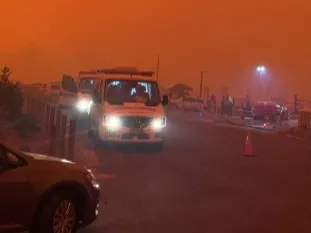
How climate change is worsening Australia's deadly wildfires
We look at the impacts climate change is having on the devasting and deadly wildfires across southeastern Australia.
Australia is more wildfire-prone than any other continent across the globe. Hot summers are common, and so are bush fire seasons capable of scorching thousands of hectares of vegetation. The 2019 fire season has seen unprecedented figures, with close to 12 million hectares burnt, most of them during the southern hemisphere spring months (September to December).
The state of New South Wales is a common hot spot for wildfires in the country, but the 2019 fire season has seen massive areas affected by the flames. Large fires in this corner of southeast Australia have occurred off and on in 1994, 1997, 2000, 2002 and 2018, but 2019 has been the worse yet.
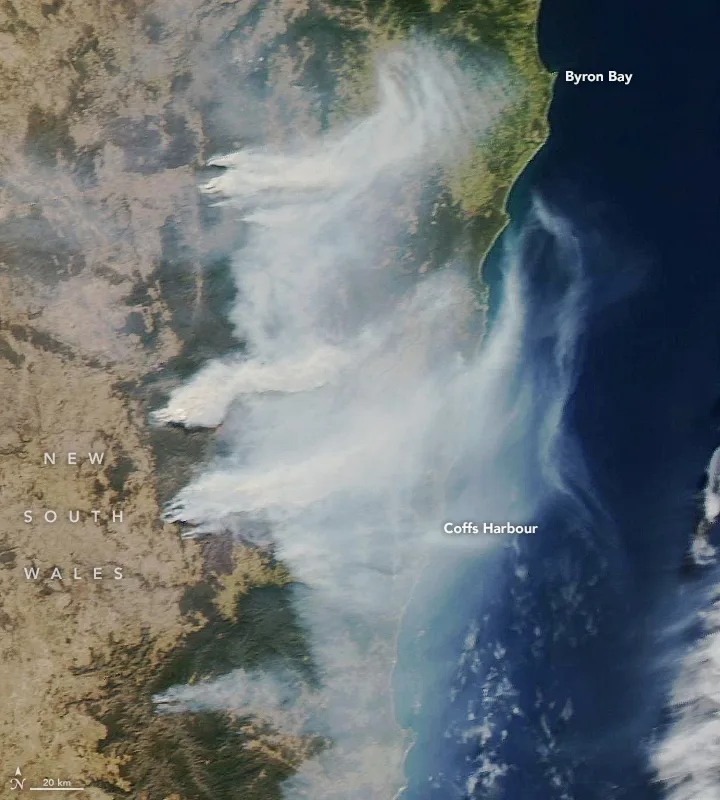
Satellite Imagery of east Australia Fires. Source: NOAA
In recent years, close to 280,000 hectares on average had been calcined, but this last wildfire season has consumed about 3.4 million hectares so far.
Although summer fires are the norm in many areas of eastern Australia, they have never had this magnitude and intensity, so much so that in some cases, emergency services declared they were unable to control them. Even the light rain falling in recent days have done nothing to help firefighters extinguish the fires.
Meanwhile, there are areas in Australia where rainfall has virtually disappeared, a situation which causes fires to advance at full speed and devour large areas of land in little time.
According to the Australian Bureau of Meteorology, some areas of the country have seen a considerable decline in precipitation. The southwest is now 20 per cent drier than in the 1970s, while the southeast has seen close to an 11 per cent decline in rainfall since the 1990s. The lower precipitation across some areas of Australia appears to be driven by a positive signal of the Southern Annular Mode (SAM).
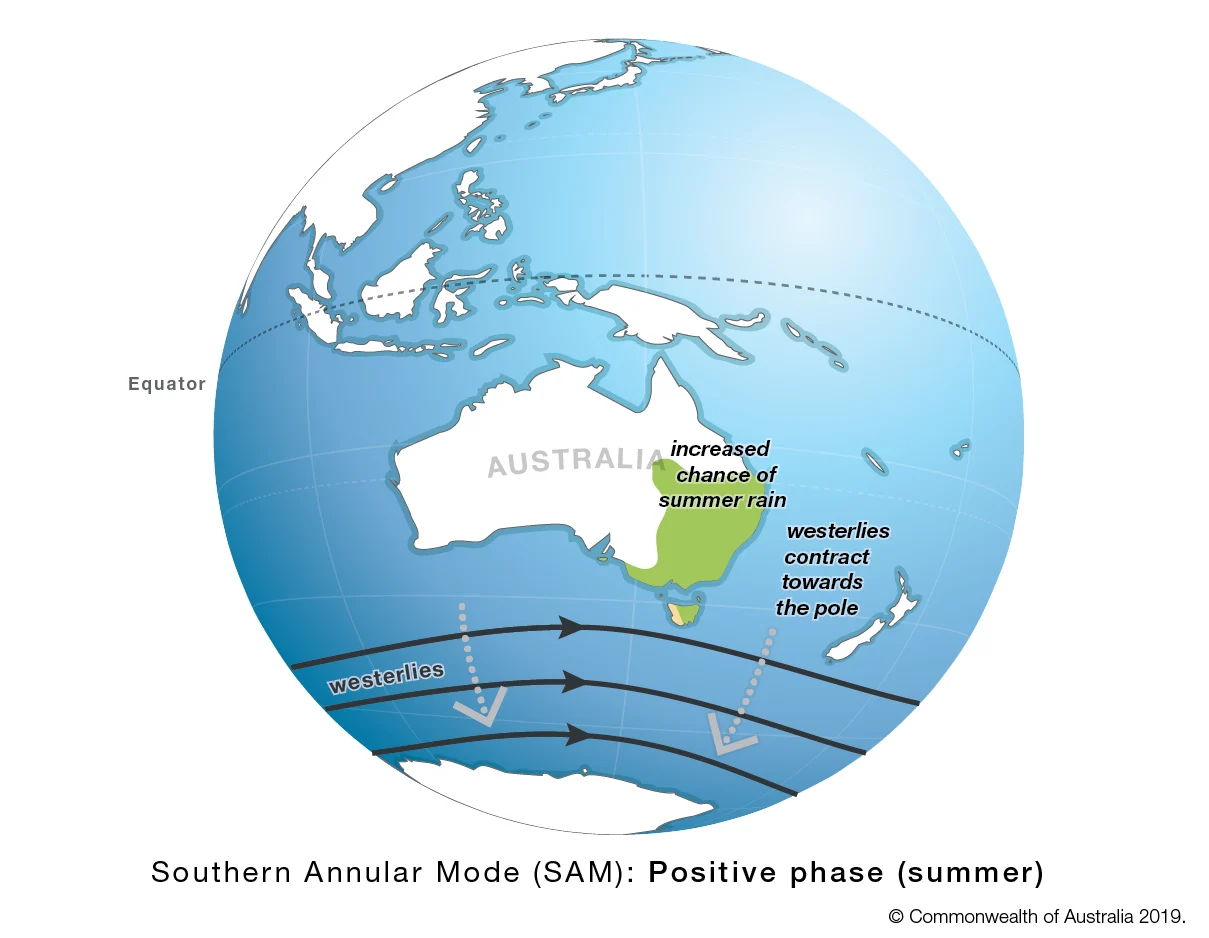
Courtesy: Commonwealth of Australia/Australian Government Bureau of Meteorology
The SAM represents the north-south movement of the westerly wind belt that blows non-stop across the middle to high latitudes of the southern hemisphere. These winds drive lows and fronts across southern Australia, bringing rainfall to many areas during the winter months. In recent years, a positive mode of the SAM has dominated, causing active fronts to move further south than usual, missing Australia. Scientists have shown through recent research, that this new trend in the SAM is linked to climate change.
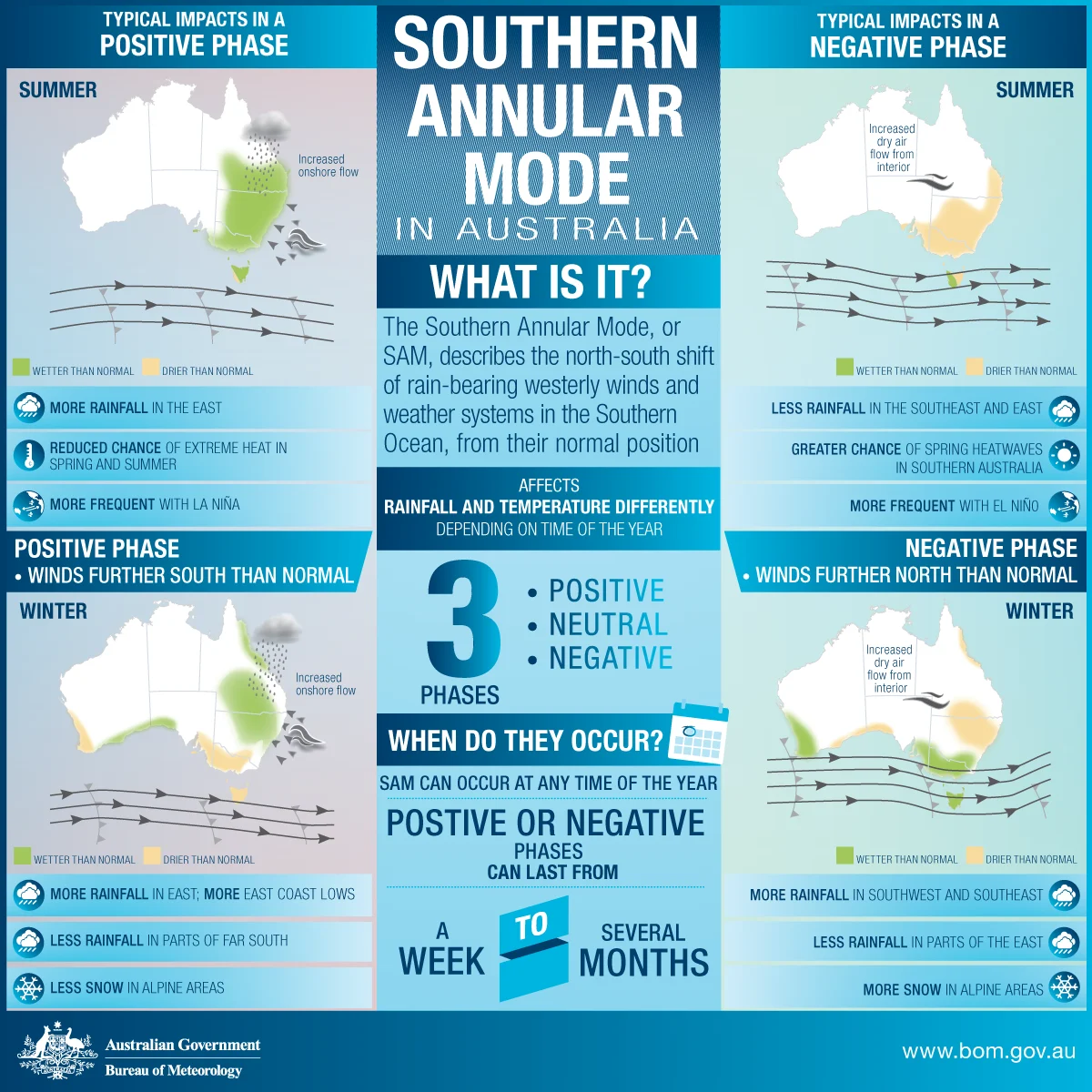
Courtesy: Australian Government Bureau of Meteorology
Some areas in the southeast part of the country have been experiencing drought since 2017, and much of the missing precipitation has failed to come during the winter months when rain is typically more abundant. This is an unprecedented scenario in Australia's historical precipitation record and is closely tied to the warm waters of the tropical Indian Ocean, as they also play a fundamental role in how precipitation patterns change over the Australian continent.
A climate phenomenon referred to as the Indian Ocean Dipole (IOD) -- also known as the Indian El Niño -- can bring more or less precipitation to the region. When in a very positive mode as it was in 2019, the cooler than usual sea surface temperatures found in the eastern section of the Indian Ocean limit the amount of moisture (rain or snow) lows and fronts carry into the southern portion of the country. This causes drought and explains why some of the worse wildfires seen in Australia have coincided with positive IOD years.
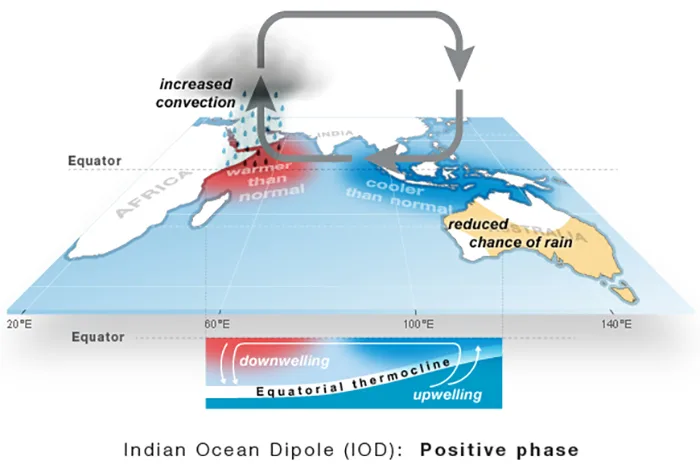
Courtesy: Australian Government Bureau of Meteorology
Researchers have also found that anthropogenic climate change is behind an increase in the frequency of positive IOD events that favour drought and wildfire occurrence in the region.
Record high temperatures have also contributed to the enhancement of the various wildfire scenarios. Overall, the average temperature in Australia this last century has gone up by more than one degree Celsius, and much of that increase comes from more frequent heat waves. In addition to the SAM and IOD anomalies, this year during the late winter months, scientists have observed unusual sudden warming of the stratosphere over Antarctica weakening the Polar Vortex. This has triggered a negative SAM event, resulting in a northern shift of the westerly winds, which can bring some very dry and hot weather across the country capable of increasing wildfire risk.
As temperatures increase, so do other variables that contribute to wildfire occurrence, like evaporation. Drier atmospheric conditions cause soils to dry but also help increase the volume of potential fuel for wildfires to burn. In addition to fatalities, the fires have caused evacuations, destruction of forest heritage and represent a threat to the survival of protected animal species, such as koalas, all without counting economic damage.
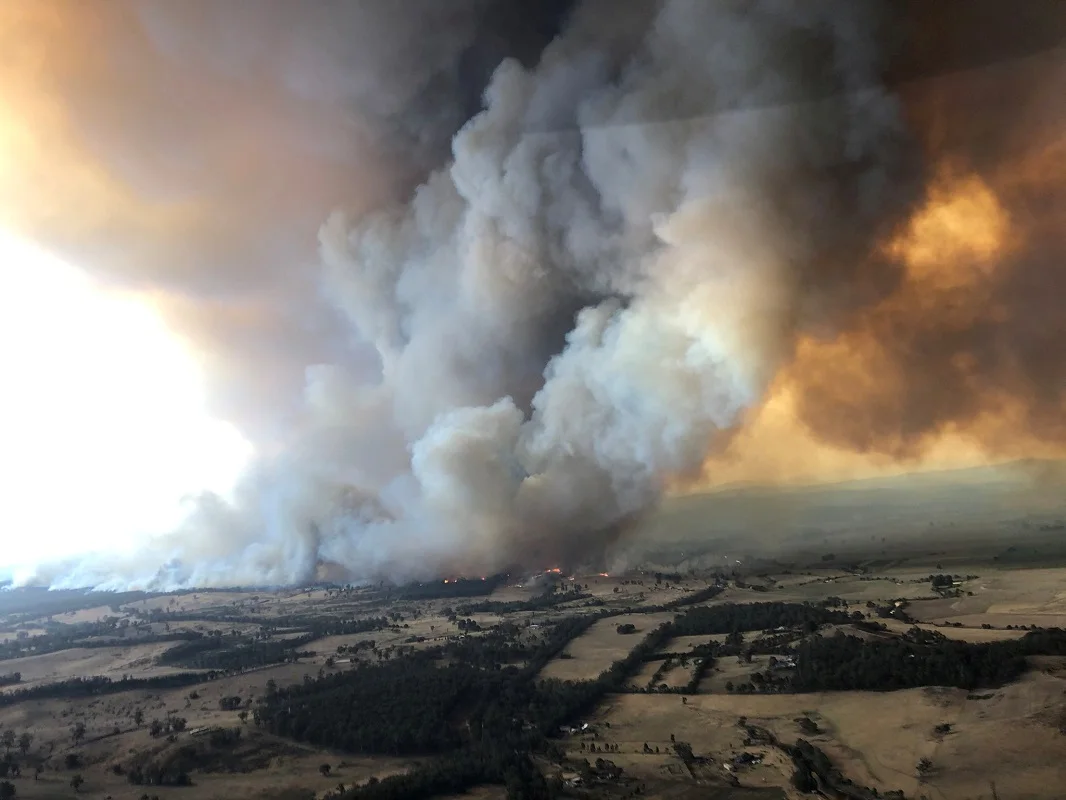
Smoke billows during bushfires in Buchan, Victoria, Australia, December 30, 2019 in this picture obtained from social media. Mandatory credit GLEN MOREY/via REUTERS
In Sydney, the smoke has literally poisoned the air, and for 30 days the pollution has exceeded intolerable levels.
Many are citing the crisis in Australia as yet another wake-up call for all governments that deny climate change or remain indifferent to it. This wave of fires has become another clear sign that the devastating effects of climate change are not a problem of the future, but of the present.













